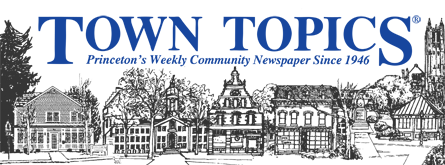To the Editor:
Over the past three months, Princeton Charter School staff, board members and some parents have touted the school’s 2015 PARCC standardized test scores as a justification for expansion, and have used those scores to criticize Princeton Public Schools, and particularly the John Witherspoon middle school. However, their claims are methodologically problematic.
First, as multiple studies have documented, standardized test scores are a bad measure of school quality. There are many reasons for this, including the biases built into such tests and the strong relationship between test scores and student demographics. In fact, Seton Hall Professor Chris Tienken has successfully predicted students’ standardized test scores with more than 80 percent accuracy, based solely on the students’ demographic information. On average, students who are low income, have special needs, or are English Language learners score lower on standardized tests, and these groups are all severely underrepresented at the Princeton Charter School.
Second, there is no meaningful data in one year of scores from a new test that has not been validated for accuracy or reliability and that has extraordinarily high refusal rates. The PARCC test was administered statewide for the first time in 2015. The New Jersey Department of Education made clear that the first year’s scores would not be used for any consequential purposes and refusal rates across the state soared. For example, at John Witherspoon Middle School, up to 22 percent of the students opted out of PARCC tests, which made the school’s PARCC results useless.
Third, while administrators and students across New Jersey’s public schools understood that 2015 was an experimental year for PARCC, and treated it as such, that was not the case at charter schools. The Christie Administration evaluates charter schools primarily on the basis of their standardized test scores, which has led most charter schools to emphasize extensive test preparation. In contrast, PPS PARCC preparation consisted primarily of familiarizing students with the new test’s online format. (As a parent of a JW student at the time, I was very happy that PPS chose to focus classroom time on real learning rather than drilling for a test that the Department of Education had admitted was inconsequential.)
Fourth, comparing test results on the PARCC to NJASK (the standardized test that PARCC replaced), is not methodologically feasible. Yet that is precisely the comparison built into the data that PCS touted. PARCC and NJASK tests are structured, administered and scored differently and cannot be compared with any credibility, especially given all the other concerns already noted.
Parents who evaluate schools on the basis of standardized test scores may wish to review the Department of Education’s prior years’ school performance reports, which show that the John Witherspoon Middle School performed much better than the Princeton Charter School relative to both other schools with similar demographics and the state as a whole. Those parents also may be interested in an analysis conducted by Rutgers Professor Bruce Baker, who examined five years of NJASK test performance for all the K-8 schools across New Jersey, controlling for student demographics and resource levels — factors that we know impact test results. Professor Baker found that all five K-8 Princeton Public Schools outperformed the Princeton Charter School. That analysis is available at: http://bit.ly/2n627TT
Julia Sass Rubin
Jefferson Road
